
Bird watching, or birding, has become a global hobby. It brings an ever-increasingly large community of nature-lovers together for a big bird count once every year. This project takes place on February 16 – 19, 2024. It is a global participatory-science project (sometimes called “citizen science” or “community science”) to collect data on wild birds. The results of the project are displayed nearly instantaneously (almost real time) using eBird. It is a cooperative international project led by Cornell Laboratory of Ornithology, the National Audubon Society, and Birds Canada that was started in 1998.
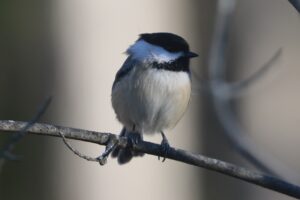
Black-Capped Chickadee / Copyright Doug Gross
This is a global survey of birds at your favorite places. The world is your birding oyster, but it starts in your own backyard. In Pennsylvania, birders take great enjoyment and pride in what birds they have attracted to their properties. It is not just a passive activity, but one that reflects what each person or family has done to provide habitat and food for birds right by their window. There certainly is an abundance of artificial feeder choices and foods galore: hanging sunflower and niger seed feeders, platform feeders, suet and peanut butter. And even mealy worms for the adventurous.
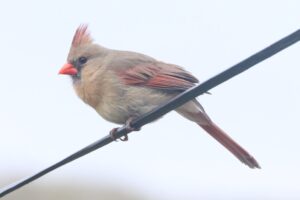
Northern Cardinal, female / Copyright Doug Gross
Habitat features are also very important. Many birders have taken the even more influential steps of planting for wildlife right in their own backyard, provide food and cover that boosts their enjoyment of birds, the quality of birds’ lives, and also increases the results of any bird tally. Shrubs and trees provide not only perches, but also thermal cover and food in the form of seeds and berries. Water features also attract many birds even in the heart of a cold, icy winter.
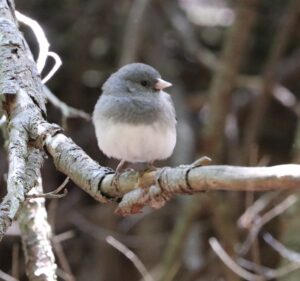
Dark Eyed Junco / Copyright Doug Gross
Evergreens of all sorts provide cover including thermal protection and wind breaks for birds. They also can seek cover from predators in thick cover of rhododendrons or hemlocks. The seed cones of pines, spruces, and red cedars are important food sources for a wide variety of birds including chickadees, titmouses, nuthatches, and finches. Recent sightings of crossbills have taken place in groves of white pines, for example.
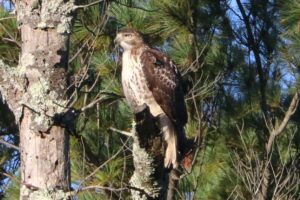
Red Tailed Hawk / Copyright Doug Gross
The Great Backyard Bird Count can and does start in your own backyard, but the project also allows participants to do a bird count in their favorite “patch” — a state park, a county park, a state forest, or a game land where they enjoy birding.
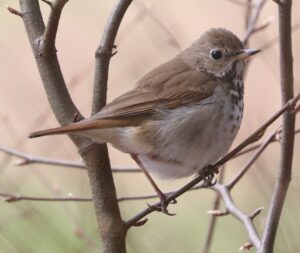
Hermit Thrush / Copyright Doug Gross
How do you participate in the Great Backyard Bird Count? Decide where you will watch birds. It could be your backyard or another one of your favorite places to enjoy birds. Just watch birds for at least 15 minutes and at least once over the four-day period of February 16 through 19, 2024.
Identify all the birds that you see or hear within your time and location. If you are starting out in your birding journey, try using the Merlin Bird ID (Identification) app to inform what birds you are seeing and hearing. There are many great bird identification field guides to aid you in your identifications. Always make sure that you have the identifications correct or your entry is not meaningful or useful. If you have some experience with bird identification and record-keeping, try the eBird Mobile app and enter your bird list on the eBird website by using your smartphone, a tablet, or a computer data entry. If you are a regular user of Merlin or eBird, continue your usual pattern of observation and data entry. In this case, your participation adds to a global effort with more participants than usual.
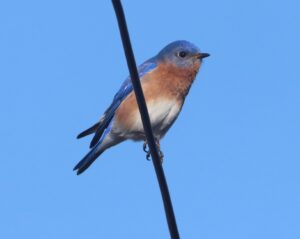
Eastern Bluebird / Copyright Doug Gross
There is the option of organizing a local community bird count event for the Great Backyard Bird Count. If you and your birding friends take this option, there are special instructions for group county and good tips for making this a seamless effort on the project’s website. After all, the Christmas Bird Count with its count circles are local bird count events which bring together birders in a community for a common bird tally and celebration. That said, you and your closest birding friends can participate individually with great success. I know that I will participate by birding right from our veranda and also in a favorite birding spot in a forest nearby. For more information about the Great Backyard Bird Project, see the website: About – Great Backyard Bird Count. Or, you can go to the Participation page for ways to enter data.
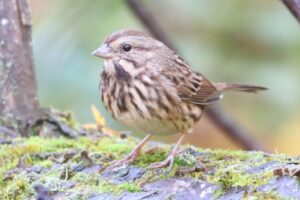
Song Sparrow / Copyright Doug Gross
Click here to check out PPFF’s new infograph on Wildlife and Birdwatching!
Written by Douglas Gross, PA Boreal Forest Study, Ricketts Glen State Park Birds




